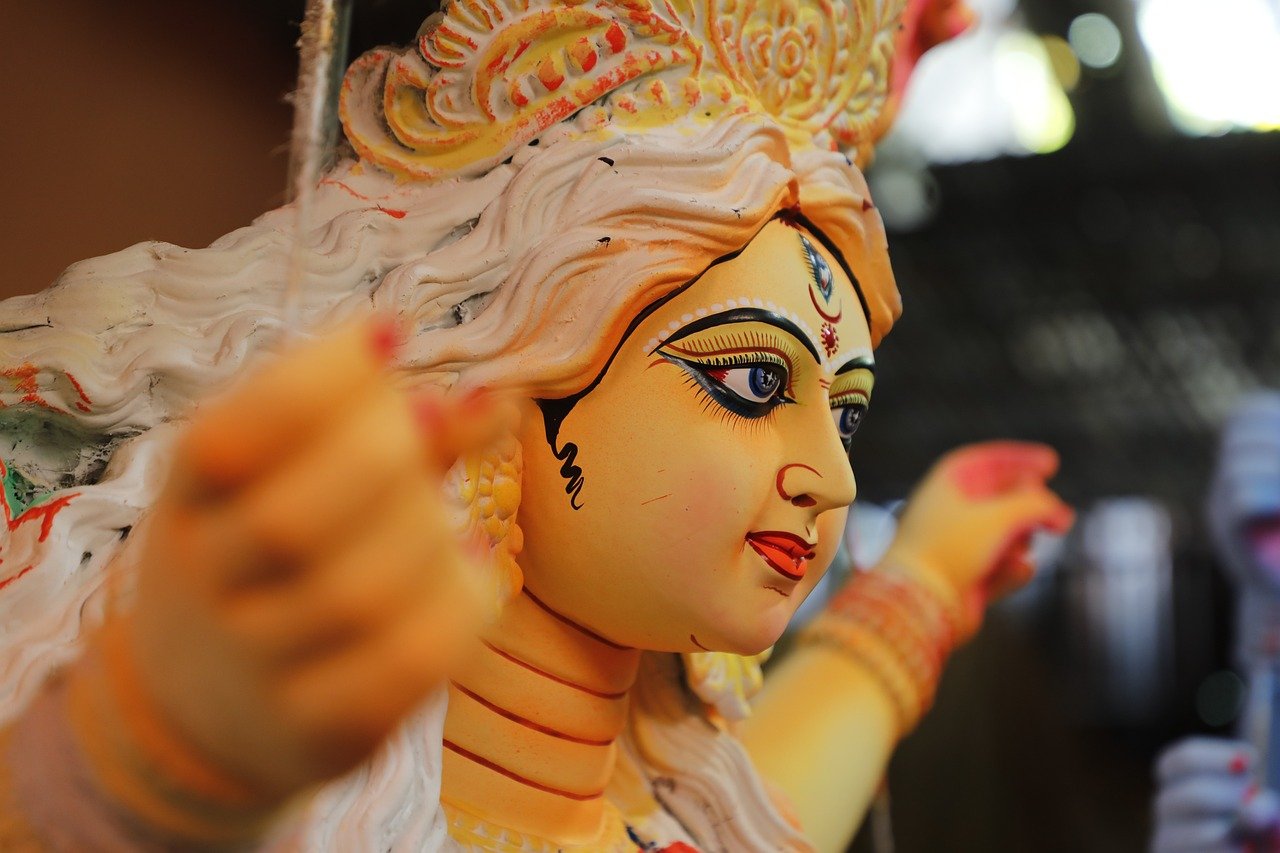Navratri, a festival revering the might and grace of Goddess Durga, marks a period of intense spiritual renewal and joyous celebration across India and among Hindu communities worldwide. This nine-night festival, translating directly to “nine nights,” symbolizes the triumph of good over evil, light over darkness, and wisdom over ignorance. It is a time when the divine feminine is celebrated, through ritual, dance, fasting, and feasting.
Understanding Navratri: A Divine Celebration
Navratri occurs four times a year, but the most significant celebrations take place during the autumn (Sharad Navratri) and spring (Chaitra Navratri). Each day is dedicated to a different aspect of Goddess Durga, manifesting her various qualities from fierce protector to benevolent mother.
The Nine Forms of Goddess Durga
- Shailaputri
- Brahmacharini
- Chandraghanta
- Kushmanda
- Skandamata
- Katyayani
- Kalaratri
- Mahagauri
- Siddhidatri
These forms represent the journey of the goddess from her birth to her emergence as a warrior, culminating in her victory over the buffalo demon Mahishasura.
The Traditions of Navratri
Fasting and Purity
Fasting during Navratri is both a spiritual and physical cleanse. Devotees abstain from meat, grains, onions, and garlic, consuming only fruits, vegetables, and fasting foods like sabudana (tapioca pearls) and kuttu ka atta (buckwheat flour).
Garba and Dandiya: Dance of Devotion
The night comes alive with Garba and Dandiya, traditional dance forms from Gujarat. Participants, adorned in colorful attire, dance in circles, celebrating the divine feminine energy.
Rituals and Offerings
Each day, devotees offer prayers and perform rituals (Puja) dedicated to the nine forms of Goddess Durga. This includes the lighting of the Akhand Diya, a lamp that burns continuously for nine days, symbolizing the eternal divine light.
Navratri Across India: A Tapestry of Celebrations
The beauty of Navratri lies in its diverse celebration styles across India.
West India: Gujarat and Maharashtra
Here, Navratri is synonymous with Garba and Dandiya. The entire community comes together, dancing in elaborate costumes to the rhythm of devotional songs.
North India: Durga Puja in Bengal
In West Bengal, the last four days of Navratri culminate in Durga Puja, a grand celebration of the goddess’s victory. Life-size idols of Durga slaying Mahishasura are worshipped, followed by immersion in water bodies.
South India: Golu Dolls and Saraswati Puja
In Tamil Nadu, Karnataka, and Andhra Pradesh, the tradition of displaying Golu dolls is prevalent. Families arrange dolls on tiered platforms, representing different themes from epics and scriptures. The eighth day is dedicated to Saraswati Puja, honoring the goddess of learning.
Navratri Special: Fasting to Feasting
Navratri food is a delightful aspect of the festival, ranging from fasting meals to sumptuous feasts.
Fasting Foods
- Sabudana Khichdi: A savory dish made from tapioca pearls, peanuts, and spices.
- Kuttu Ki Roti: Flatbreads made from buckwheat flour, served with yogurt and vegetables.
- Fruit Chaat: A refreshing mix of fruits, spiced lightly with rock salt and lemon juice.
Feasting and Sweets
- Jalebi: A sweet, crispy, and syrupy dessert, popular after the fasting period.
- Chole Puri: Spicy chickpeas served with fried bread, a festive meal in many regions.
Navratri Fashion: Colors and Traditions
Navratri brings out vibrant fashion, with each day associated with a specific color. Participants wear traditional dresses, with women donning lehengas and chaniya choli, and men in kurta pajamas and dhotis. The colors, ranging from royal blues to auspicious reds, add to the festival’s visual appeal.
Spiritual Significance and Modern Celebrations
Navratri is not just a cultural festivity but a spiritual journey. It encourages self-reflection, purification, and the renewal of one’s faith. In contemporary times, while the essence of Navratri remains intact, modern elements have been woven into its celebration, from electronic dance music at Garba nights to online fasting workshops.
Community and Charity
Navratri is also a time for community service and charity. Many use this time to contribute to society, supporting causes like education for underprivileged children and feeding the needy.
Conclusion: Embracing the Divine Feminine
Navratri, with its rich tapestry of rituals, traditions, and celebrations, invites everyone to experience the power of the divine feminine. It’s a time for devotion, introspection, and community, transcending geographical and cultural boundaries. As we engage in the festivities, let’s remember the deeper essence of Navratri—honoring the strength, wisdom, and compassion of the Goddess Durga, and through her, recognizing these qualities within ourselves.
In celebrating Navratri, we reaffirm our commitment to the values of righteousness, compassion, and perseverance, fostering a world where the divine feminine is revered and celebrated in all its forms.

